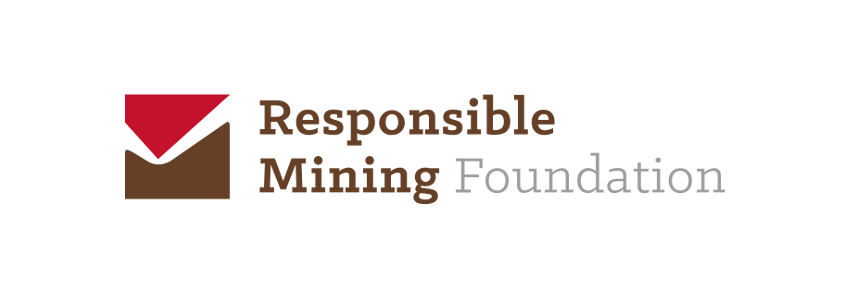Tailings risks: maintaining momentum
09.02.2021

At the second anniversary of the tailings dam burst in Brumadinho/Brazil that killed at least 270 people and destroyed the livelihoods and environments for many others, the mining industry seems more willing than ever to take the issue of tailings risks seriously. But the challenges are great, if one considers the vast numbers of abandoned sites, the profit motive driving corporate decision-making, and the way that regulators have allowed companies to walk away from their responsibilities and externalise costs to society and future generations.
Thanks to recent work by World Mine Tailings Failures [WMTF (2021), ‘Estimate of World Tailings Portfolio 2020’. https://worldminetailingsfailures.org/estimate-of-world-tailingsportfolio-2020/], we now have a better understanding of the scale and risks that tailings pose worldwide: an estimated 29 000 – 35 000 tailings storage facilities (TSF) hold approximately 223 billion tonnes of tailings, including active, inactive and abandoned facilities. Prior to the Brumadinho disaster there was no global public register of TSF. The Investor Mining & Tailings Safety Initiative [Led by the Church of England Pensions Board and the Swedish Council of Ethics of the AP Funds. https://www.churchofengland.org/about/leadership-and-governance/church-england-pensions-board/old-pensions-boardinvestments-0] that followed triggered a rush to positive disclosure from more than 250 companies – a good start, and the momentum of the Global Tailings Portal [Global Tailings Portal. https://tailing.grida.no] continues.
Despite such disclosure, the RMI Report 2020 reveals that the vast majority of large-scale mining companies are still unable to demonstrate that they review and report on how effectively they manage TSF-related risks, and take responsive actions as necessary. And critically, very few mine sites show evidence of systematically informing local communities about what to do for their own safety in the case of a tailings-related incident.
The new Standard is encouraging, but incomplete
A multi-stakeholder initiative has subsequently published the Global Industry Standard on Tailings Management [GTR (2020), ‘Global Industry Standard on Tailings Management’. https://globaltailingsreview.org/wpcontent/uploads/2020/08/global-industry-standard_EN.pdf]. This is most welcome, though RMF would support more ambitious aims for the standard as it evolves. These include:
· Raise accountability and responsibility to the CEO or the Board level;
· Make Free, Prior, and Informed Consent (FPIC) a fundamental right, not a formality to be ineluctably obtained;
· Include protection of World Heritage Sites and other recognised protected areas;
· Include protection of riverine, lake, and marine environments;
· Specify that TSF should be located away from community and worker facilities;
· Specify that TSF should not be located in areas with moderate or higher seismic risk;
· Require more public disclosure of the effectiveness of measures taken to limit risk; and
· Revise the consequence classification matrix to classify as ‘Extreme’ any failure that would result in any loss of life, instead of the current threshold of 100+ human fatalities.
Managing existing TSF risks
Moreover, the Global Industry Standard on Tailings Management applies mostly to new TSF, with less attention being paid to existing ones. Yet it is estimated that up to one-third of the current global portfolio of TSF are impaired and in need of urgent intervention [WMTF (2021), ‘Estimate of World Tailings Portfolio 2020’. https://worldminetailingsfailures.org/estimate-of-world-tailingsportfolio-2020/]. The costs of de-risking or removing all TSF that pose a high threat of harm in the event of failure are enormous – in the region of US$ 670 bn [WMTF (2021), ‘Estimate of World Tailings Portfolio 2020’. https://worldminetailingsfailures.org/estimate-of-world-tailingsportfolio-2020/]. Clearly urgent action at scale is needed to address the thousands of highest risk TSF that currently threaten the lives of many peoples around the world.
Legacy sites also need attention
The government of China acted incisively last year, after a tailings dam spill at a molybdenum mine that was the biggest tailings leak the country experienced in 20 years [Reuters (2020), ‘China to limit new tailings dams to reduce safety, environmental risks’. https://www.reuters.com/article/uschina-tailings/china-to-limit-new-tailings-dams-to-reduce-safety-environmental-risks-idUSKBN21A175]. The government instituted new measures that require all TSF that have been out of commission for over three years or abandoned to be shut down within a year. The guidelines also cap the height of new TSF to 200 meters, and prohibit tailings dams to be built too close to residential areas, important facilities or major rivers.
It is estimated that 25 % to 30 % of all TSF are abandoned [WMTF (2021), ‘Estimate of World Tailings Portfolio 2020’. https://worldminetailingsfailures.org/estimate-of-world-tailingsportfolio-2020/], raising the question of responsibility over time. Regulators must ensure that companies do not externalise their post-closure legacy management and costs to taxpayers and future generations. Mining companies and their industry associations can also demonstrate leadership by playing an active role in addressing legacy issues across the sector.
Ensuring inclusive collaboration
We need more coordinated and inclusive efforts worldwide to ensure leading practices on tailings management are implemented and enforced across the industry. The proposed establishment of an independent Global Tailings Institute is an opportunity to promote a more ambitious Global Industry Standard on Tailings Management, re-build trust in the industry, and use its independent status to foster inclusive international collaboration.


